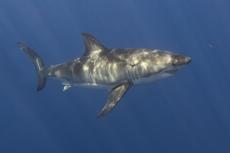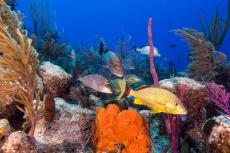Great White Sharks Separated Into Three Population Groups
A new global study has shed light on the genetic diversity of the great white shark, an apex predator found in oceans worldwide. Having been subject to extreme fishing pressure by industrial fishing fleets as well as recreational fishermen, the species is currently classified as Vulnerable on a global scale and Critically Endangered in Europe.
The study, led by researcher Isabel Wagner, used a groundbreaking approach. They combined advanced genetic techniques (including target gene capture sequencing and whole-genome re-sequencing), to analyse the DNA of white sharks from across their global range. Eighty-nine individual sharks were examined through target gene capture sequencing, and seventeen sharks were studied through whole-genome re-sequencing.
Three distinct populations
The results revealed three genetically distinct lineages of white sharks: one in the North Atlantic, another in the Indo-Pacific, and a third in the North Pacific. These lineages diverged between 100,000 and 200,000 years ago, likely due to environmental changes during the Penultimate Glaciation. During this period, low sea levels, shifting ocean currents, and varying water temperatures, created barriers that led to the separation of these populations.
These lineages rarely inter-breed, and there is evidence of only a few, very recent hybrids.
The importance of the method
This study highlights the importance of using high-resolution genomic analyses to fully understand the diversity within species like the white shark. Without such comprehensive research, the true extent of their genetic diversity, the barriers to inter-breeding, and the potential for local adaptation could remain unknown.
Conservation efforts needed
This knowledge is essential for informed conservation strategies aimed at protecting these remarkable predators. This new knowledge shows that conservation efforts for white sharks require deeper understanding and management of these distinct populations. It is crucial for the species' survival.






























